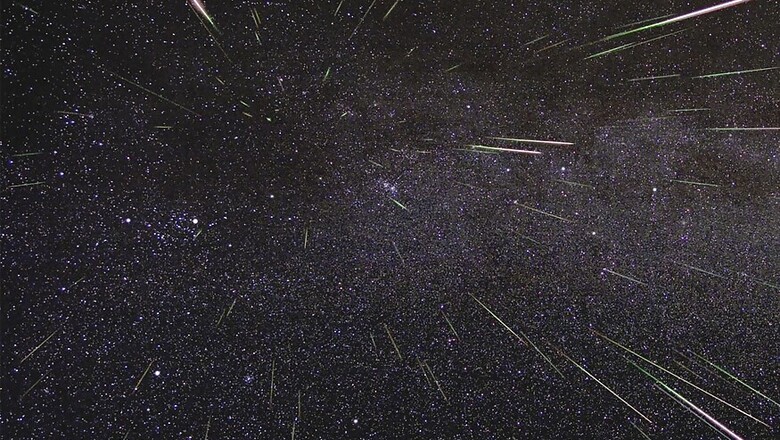
views
Geminid Meteor Shower 2018 | The Geminid meteor shower 2018 is expected to happen between December 13 and December 14.
The Geminid meteor shower is a December celestial phenomenon that happens every year when the Earth passes through a massive trail of debris of 3200 Phaethon. Named after the ancient Greek god Apollo’s son, 3200 Phaethon is an asteroid whose orbit brings it closer to the sun than Mercury. First discovered through satellite data 35 years ago, Phaethon is responsible for bringing the spectacular Geminid meteor showers to Earth’s atmosphere every December.
The Geminid meteor shower 2018 will be live streamed by the NASA. According to the space agency, the Geminid meteor shower rate will increase towards the morning and can be witnessed at a theoretical maximum of about 100 per hour at around 2 AM.
Where Can the Geminid Meteor Shower 2018 be Visible?
The Geminid meteor shower can be visible from all across the globe. Although the Geminid meteor shower is more prominent in the Northern Hemisphere, Indians can also witness it.
As per NASA research, in haze-engulfed cities or cities plagued by pollution, the Geminid meteor shower will be hard to see.
Geminid Meteor Shower 2018: India Timings
Geminid Meteor Shower 2018 is expected to take place between December 13 and December 14. If the weather is clear, 2018 should be the best year ever to watch the Gemenides—so named because they seem to originate from the constellation Gemini.
How to Watch Geminid Meteor Shower 2018 in India?
In order to witness the Geminid Meteor Shower, people are advised to locate the darkest place in the sky and give your eyes about 30 minutes to adapt to the darkness. Then, according to NASA, lie flat on your back and look straight up and you will soon start to see the meteor showers.
Later at night, around 2 am, the Geminid meteor shower rate will increase and hit a theoretical maximum of about 100 per hour. Search engine Google has put out a Doodle to track the meteor showers.

















Comments
0 comment